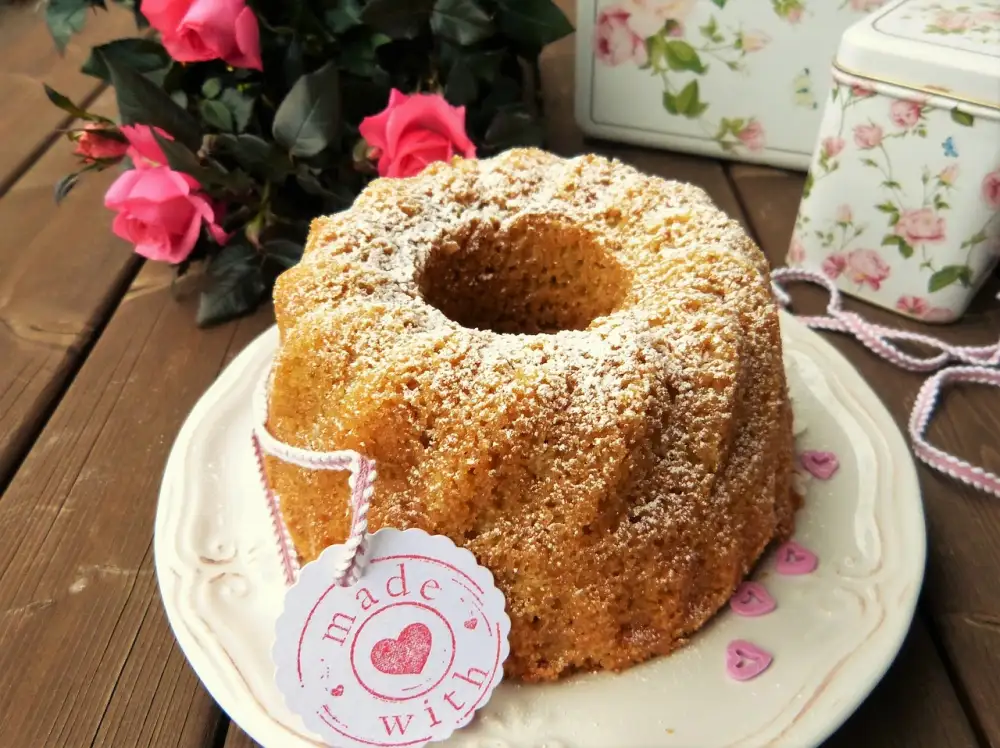Discover the Best Gluten-Free Flour Options for a Healthy Lifestyle

- Understanding Gluten and its Effects on Health
- What is Gluten-Free Flour?
- Types of Gluten-Free Flours Available
- Benefits of Using Gluten-Free Flour
- How to Use Gluten-Free Flour in Baking and Cooking
- Tips for Substituting Gluten-Free Flour in Recipes
- Potential Challenges and Solutions when Using Gluten-Free Flour
- Gluten-Free Flour Recipes for Healthier Alternatives
Gluten-free flour has gained popularity in recent years as more people are adopting a gluten-free lifestyle. Whether due to health concerns or personal preferences, many individuals are seeking alternatives to traditional wheat flour. In this article, we will explore the world of gluten-free flour and discover the best options for a healthy lifestyle. From understanding what gluten is to learning how to use gluten-free flour in baking and cooking, we will cover all the essential information you need to know. So let's dive in and explore the wonderful world of gluten-free flours!
Understanding Gluten and its Effects on Health
Gluten is a protein found in wheat, barley, and rye. For individuals with celiac disease or gluten sensitivity, consuming gluten can lead to various health issues. Celiac disease is an autoimmune disorder where the body's immune system attacks the small intestine when gluten is ingested. This can cause damage to the lining of the intestine, leading to malabsorption of nutrients and other complications.
In addition to celiac disease, some people may experience non-celiac gluten sensitivity. This condition involves experiencing symptoms similar to those with celiac disease but without the intestinal damage. Symptoms may include bloating, abdominal pain, diarrhea, fatigue, and headaches.
It is important for individuals with these conditions to follow a strict gluten-free diet to avoid adverse health effects. This means eliminating all sources of gluten from their diet, including foods made with regular flour.
By understanding the effects of gluten on health, individuals can make informed choices about their dietary needs and explore alternatives such as gluten-free flour options for a healthier lifestyle.
What is Gluten-Free Flour?
Gluten-free flour is a type of flour that does not contain gluten, a protein found in wheat, barley, and rye. It is specifically designed for individuals who have celiac disease or gluten sensitivity. Gluten-free flours are made from alternative grains and starches such as rice, corn, potato, tapioca, almond, and coconut. These flours provide a safe option for those following a gluten-free diet while still allowing them to enjoy baked goods and other dishes without compromising taste or texture.
Types of Gluten-Free Flours Available
There are several types of gluten-free flours available on the market today, providing a wide range of options for those following a gluten-free lifestyle. Some popular choices include almond flour, coconut flour, rice flour, tapioca flour, and sorghum flour. Each type of flour has its own unique flavor and texture, making it suitable for different recipes and cooking methods. Experimenting with these different flours can open up a whole new world of flavors and possibilities in gluten-free cooking.
Benefits of Using Gluten-Free Flour
Using gluten-free flour has numerous benefits for those looking to maintain a healthy lifestyle. Firstly, it is a great option for individuals with celiac disease or gluten sensitivity, as it allows them to enjoy baked goods without experiencing any adverse reactions. Additionally, gluten-free flour is often made from whole grains and alternative flours such as rice, almond, or coconut, which are higher in fiber and nutrients compared to traditional wheat flour. This can help improve digestion and promote better overall gut health. Furthermore, using gluten-free flour can also lead to weight loss and improved energy levels, as it eliminates processed ingredients commonly found in regular flour. Lastly, incorporating gluten-free flour into your diet can expand your culinary horizons by introducing new flavors and textures to your favorite recipes.
How to Use Gluten-Free Flour in Baking and Cooking
When using gluten-free flour in baking and cooking, it's important to understand that it behaves differently than traditional wheat flour. Here are some tips for using gluten-free flour effectively:
1. Measure accurately: Gluten-free flours can vary in density, so it's crucial to measure them accurately. Use a kitchen scale for precise measurements.
2. Blend flours: To achieve a better texture and flavor, blend different gluten-free flours together. Common blends include rice flour, tapioca flour, and potato starch.
3. Add binders: Gluten-free flours lack the binding properties of gluten. Add binders like xanthan gum or guar gum to help improve the texture and structure of your baked goods.
4. Increase moisture: Gluten-free flours tend to absorb more liquid than wheat flour. Increase the amount of liquid in your recipes to prevent dryness.
5. Experiment with ratios: Start by substituting a small portion of regular flour with gluten-free flour in your recipes. Gradually increase the ratio until you find the right balance.
6. Mix thoroughly: Gluten-free flours often require more mixing to develop structure and avoid grittiness. Be sure to mix your batter or dough thoroughly for best results.
By following these tips, you can successfully incorporate gluten-free flour into your favorite recipes and enjoy delicious baked goods without compromising on taste or texture.
Tips for Substituting Gluten-Free Flour in Recipes
When substituting gluten-free flour in recipes, it's important to keep a few tips in mind. Firstly, it's crucial to understand that gluten-free flours have different properties than regular wheat flour. They may absorb more liquid or require additional binding agents such as xanthan gum or guar gum.
To ensure successful results, start by using a reliable gluten-free flour blend that is specifically designed for baking. These blends often contain a combination of different flours and starches to mimic the texture and structure of wheat flour.
Next, consider the ratio of gluten-free flour to other ingredients in the recipe. In general, you may need to use slightly more gluten-free flour than the amount of wheat flour called for in the original recipe. This can help compensate for the lack of gluten and ensure proper texture.
It's also helpful to add moisture-rich ingredients such as applesauce, yogurt, or mashed bananas to recipes when using gluten-free flour. These ingredients can help keep baked goods moist and prevent them from becoming dry or crumbly.
Additionally, be mindful of baking times and temperatures. Gluten-free baked goods may require longer baking times at lower temperatures to fully cook through without burning on the outside.
Lastly, don't be afraid to experiment and adjust your recipes as needed. Every brand of gluten-free flour may have slightly different properties, so don't hesitate to make modifications based on your own experience and taste preferences.
By following these tips and being open to adaptation, you can successfully substitute gluten-free flour in your favorite recipes while still enjoying delicious and satisfying results.
Potential Challenges and Solutions when Using Gluten-Free Flour
When using gluten-free flour, there can be some challenges that you may encounter. One of the main challenges is that gluten-free flours have a different texture and taste compared to traditional wheat flour. This can affect the outcome of your baked goods or dishes.
Gluten-free flours tend to be denser and have less elasticity, which can result in a heavier and crumbly texture. To overcome this challenge, it is important to use a combination of gluten-free flours and starches to mimic the properties of gluten. Blending flours like rice flour, almond flour, tapioca flour, and potato starch can help achieve better results.
Another challenge is that gluten-free flours often require more moisture than regular wheat flour. This is because they tend to absorb liquid differently. To prevent dryness in your recipes, you may need to increase the amount of liquid or use ingredients like applesauce or yogurt for added moisture.
Additionally, gluten-free flours may not brown as well as wheat flour due to their lack of protein content. To enhance browning, you can try using ingredients like honey or maple syrup in your recipes.
It's also important to note that different brands of gluten-free flours may vary in their composition and performance. It may require some experimentation and adjustment when substituting regular flour with gluten-free alternatives.
Despite these challenges, there are solutions available to ensure successful baking and cooking with gluten-free flour. By understanding the characteristics of different types of gluten-free flours and experimenting with various combinations and techniques, you can achieve delicious results while maintaining a healthy lifestyle.
Gluten-Free Flour Recipes for Healthier Alternatives
1. Almond Flour Pancakes: Replace regular flour with almond flour to make fluffy and nutritious pancakes. Top them with fresh berries and a drizzle of honey for a delicious breakfast.
2. Quinoa Pizza Crust: Swap traditional pizza crust with quinoa flour for a gluten-free option. Load it up with your favorite toppings and enjoy a guilt-free pizza night.
3. Coconut Flour Banana Bread: Use coconut flour instead of wheat flour to create a moist and flavorful banana bread. Add some dark chocolate chips or nuts for extra texture.
4. Chickpea Flour Flatbread: Make a simple flatbread using chickpea flour, water, and spices like cumin and turmeric. Serve it as a side dish or use it as a wrap for sandwiches.
5. Buckwheat Crepes: Whip up savory or sweet crepes using buckwheat flour. Fill them with vegetables, cheese, or fruits for a versatile and satisfying meal.
By incorporating these gluten-free flour recipes into your diet, you can enjoy healthier alternatives without compromising on taste or texture.
In conclusion, embracing gluten-free flour is a great way to lead a healthier lifestyle. By understanding the effects of gluten on our health and exploring the various types of gluten-free flours available, we can make informed choices in our cooking and baking. Using gluten-free flour not only allows those with gluten sensitivities or allergies to enjoy delicious meals, but it also offers numerous benefits such as improved digestion and increased nutrient intake. With some experimentation and the right substitutions, anyone can successfully incorporate gluten-free flour into their favorite recipes. So why not give it a try and discover the wonderful world of gluten-free cooking for yourself? Your taste buds and your body will thank you!
Published: 08. 12. 2023
Category: Food



